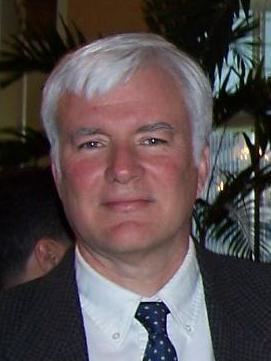Nationality American Role Physicist Name Christopher Hill | Alma mater M.I.T.Caltech | |
 | ||
Known for Topcolor; Top quark condensate; Dimensional deconstruction; Theory of UHE Cosmic Rays; Soft Nambu-Goldstone Boson model of Dark Matter. Education Massachusetts Institute of Technology Books Quantum Physics for Poets, Beyond the God Particle | ||
Mathematical Symmetry
Christopher T. Hill (born June 9, 1951) is an American theoretical physicist at the Fermi National Accelerator Laboratory. He did undergraduate work in physics at M.I.T. (B.S., M.S., 1972), and graduate work at Caltech (Ph.D., 1977, Murray Gell-Mann). Hill's Ph.D. thesis, "Higgs Scalars and the Nonleptonic Weak Interactions" (1977) contains the first detailed discussion of the two-Higgs-doublet model.
Contents
Hill has made numerous contributions to dynamical theories of electroweak symmetry breaking, and is a co-originator of the top quark infrared fixed point, top quark condensates, topcolor, top-seesaw models, and dimensional deconstruction. He is also an originator of cosmological models of dark energy and dark matter based upon ultra-low mass (Nambu-Goldstone) bosons generally associated with neutrino masses. With the late David Schramm (astrophysicist), he developed equations describing the evolution of the spectrum of ultra-high-energy (UHE) cosmic rays and proposed modern theories of the origin of ultra-high-energy (UHE) nucleons and (UHE) neutrinos from grand unification relics, such as cosmic strings and monopole annihilation. He has also proposed extensive particle physics based models of dark matter, originally in the "late time phase transition" in the early universe with Schramm and Fry. In 2005 Hill gave a summary talk at a major conference where he focused upon the question, "what if the chestnut of theorists, supersymmetry, is not discovered at the Large Hadron Collider in Geneve?"
Recently Hill's research has focused on the idea that the Higgs boson mass and other physics may be associated with spontaneously broken scale symmetry, (Weyl symmetry) and that the Planck mass, and the inflationary phase of the ultra-early universe, are generated together as part of a unified phenomenon. This implies that there are no fundamental mass scales, and only dimensionless ratios of masses occur in nature. Hill has emphasized that this is sensible in quantum field theory only in D=4, and may be the selection rule that determines the observed four dimensions of space and time. Some of these ideas were elaborated in a talk given on the occasion of the celebration of the 75th birthday of Murray Gell-Mann in Santa Fe, New Mexico, (2005).
Hill is a Fellow of the American Physical Society and formerly Head of the Theoretical Physics Department at Fermilab (2005 - 2012). He has co-authored three popular books about science, particle physics and cosmology, and the commissioning of the Large Hadron Collider, with Nobel laureate Leon Lederman.
